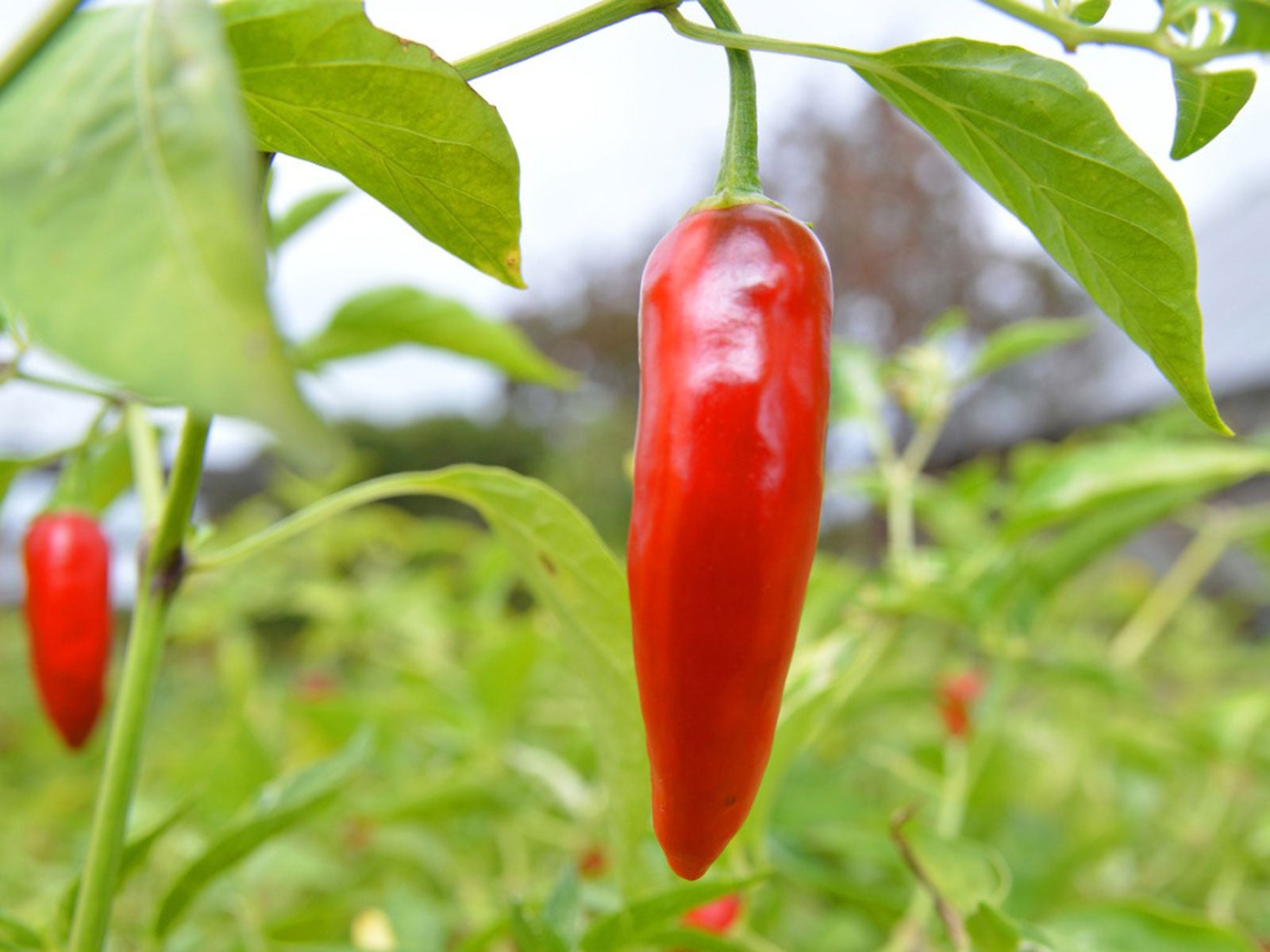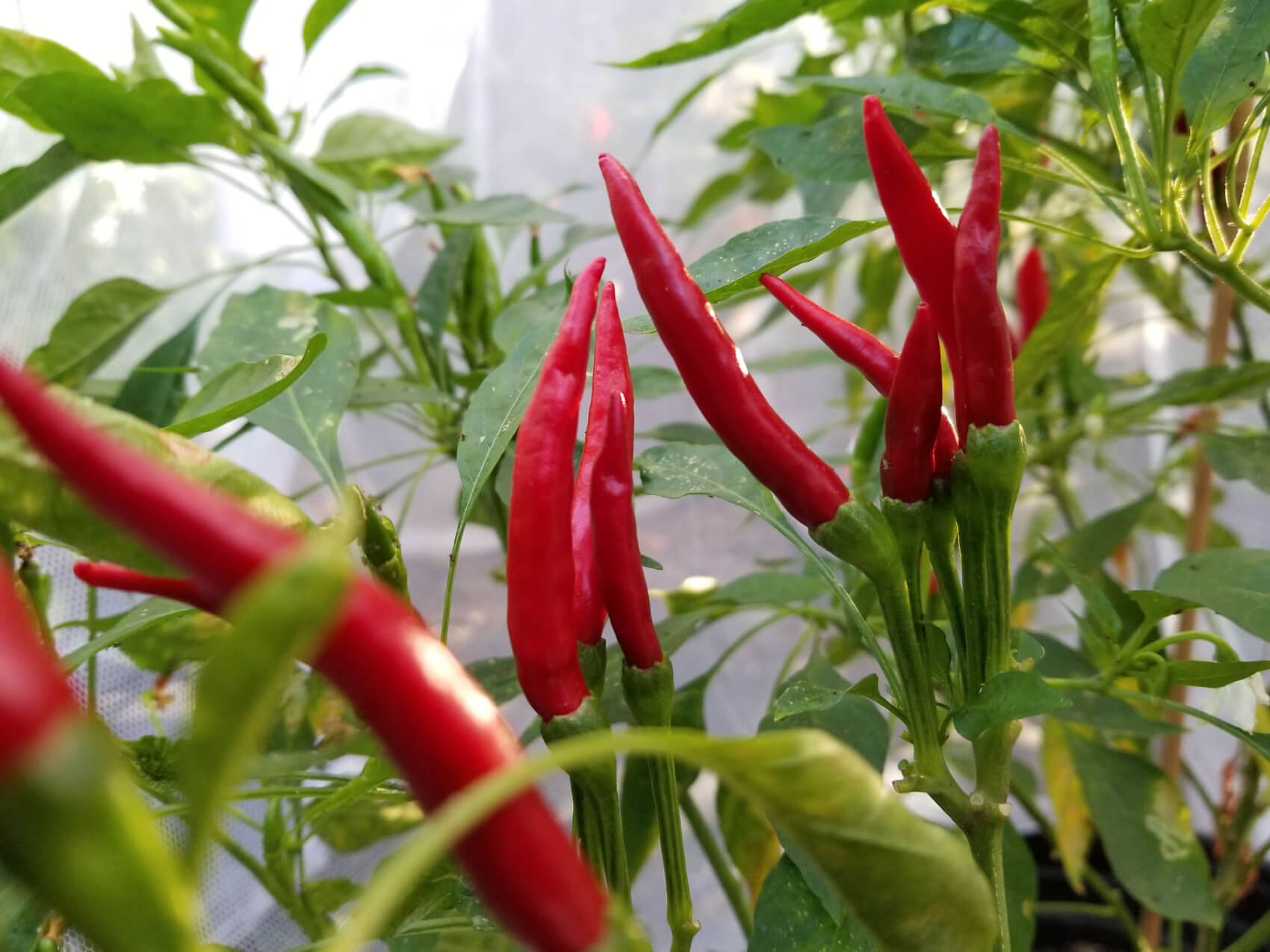Discover the fascinating world of Thai red chilli plants, renowned for their vibrant hues, fiery flavor, and remarkable medicinal properties. These plants, with their unique botanical characteristics, thrive in specific growing conditions and offer a myriad of culinary and health benefits.
From their distinctive size and shape to their intricate leaf structure, Thai red chilli plants stand out from other chilli varieties. Understanding their botanical features is essential for successful cultivation.
Botanical Characteristics of Thai Red Chilli Plant

The Thai red chilli plant, scientifically classified as Capsicum annuum var. acuminatum, is a captivating member of the nightshade family. This tropical plant is widely cultivated in Thailand and other Southeast Asian countries for its vibrant red chillies, which are highly prized for their distinct flavor and culinary versatility.
Thai red chilli plants are characterized by their compact size, reaching an average height of 2-3 feet. They possess a sturdy, upright growth habit, with a bushy appearance due to their numerous branches. The leaves of the plant are ovate to lanceolate in shape, with serrated edges and a glossy, deep green color.
Size and Shape
Thai red chilli plants are relatively small in size, typically growing to a height of 2-3 feet. They have a compact, bushy growth habit, with multiple branches that contribute to their dense appearance.
Leaf Structure
The leaves of Thai red chilli plants are ovate to lanceolate in shape, with pointed tips and serrated edges. They are arranged alternately on the stems and have a glossy, deep green color. The leaves are relatively large, measuring approximately 3-5 inches in length and 1-2 inches in width.
Distinctive Characteristics
Thai red chilli plants are distinguished from other chilli varieties by their unique characteristics, which include:
- Compact size and bushy growth habit
- Ovate to lanceolate leaves with serrated edges
- Glossy, deep green leaves
- Upright growth habit
Table of Key Botanical Features
| Feature | Description |
|---|---|
| Size | 2-3 feet in height |
| Shape | Compact, bushy growth habit |
| Leaves | Ovate to lanceolate in shape, serrated edges, glossy, deep green color |
| Growth Habit | Upright |
Cultivation and Care Requirements

Growing Thai red chilli plants requires specific conditions to thrive and produce an abundant harvest. Understanding their optimal growing environment and providing appropriate care is essential for successful cultivation.
Growing Conditions
Thai red chilli plants prefer well-drained, fertile soil with a pH range between 6.0 and 7.0. They require full sunlight for at least 6 hours per day and regular watering, especially during hot and dry weather.
Planting and Propagation
Chilli plants can be started from seeds or cuttings. Seeds should be sown in a seed tray filled with a seed-starting mix and kept warm and moist until germination. Cuttings can be taken from healthy plants and rooted in a well-draining potting mix.
Maintenance, Thai red chilli plant
Regular watering and fertilizing are crucial for maintaining healthy chilli plants. Mulching around the plants helps retain moisture and suppress weeds. Pruning can be done to encourage bushier growth and increase fruit production.
Troubleshooting Common Problems
- Blossom end rot: Caused by calcium deficiency, this condition leads to a sunken, dark spot on the blossom end of the fruit.
- Aphids: These tiny insects can infest chilli plants and suck their sap, causing stunted growth and yellowing leaves.
- Spider mites: These pests spin fine webs on the undersides of leaves and can cause leaf damage and reduced fruit production.
Culinary and Medicinal Uses: Thai Red Chilli Plant
Thai red chilli peppers are widely used in cooking for their unique flavor and heat. They are commonly found in Thai, Laotian, and Vietnamese cuisines, and are also used in many other Asian dishes.
Thai red chilli peppers have a distinct flavor profile that is both spicy and slightly sweet. The heat level of these peppers can vary, but they are generally considered to be medium-hot. This makes them a versatile ingredient that can be used in a variety of dishes, from spicy stir-fries to mild curries.
Culinary Uses
- Thai red chilli peppers are often used fresh, but they can also be dried and ground into a powder.
- Fresh Thai red chilli peppers can be added to dishes whole, sliced, or chopped.
- Dried Thai red chilli peppers can be used to make chilli paste, chilli oil, and other condiments.
- Thai red chilli peppers are also used in many Thai soups and curries.
Medicinal Properties
In addition to their culinary uses, Thai red chilli peppers also have a number of medicinal properties. They are a good source of vitamins A and C, and they also contain capsaicin, a compound that has been shown to have anti-inflammatory and pain-relieving effects.
Some studies have shown that capsaicin may also be helpful in reducing the risk of heart disease and cancer.
Recipe: Pad Prik King
Pad Prik King is a classic Thai dish that features stir-fried vegetables in a spicy chilli sauce. This dish is easy to make and can be tailored to your own taste preferences.
Ingredients
- 1 tablespoon vegetable oil
- 1 onion, sliced
- 2 cloves garlic, minced
- 1 red bell pepper, sliced
- 1 green bell pepper, sliced
- 1 cup baby corn
- 1 cup snow peas
- 1/2 cup Thai red chilli peppers, sliced
- 1/4 cup soy sauce
- 1/4 cup water
- 1 tablespoon sugar
- 1 teaspoon cornstarch
Instructions
- Heat the vegetable oil in a large skillet or wok over medium-high heat.
- Add the onion and garlic and cook until softened.
- Add the bell peppers, baby corn, and snow peas and cook until crisp-tender.
- Add the chilli peppers and cook for 1 minute more.
- In a small bowl, whisk together the soy sauce, water, sugar, and cornstarch.
- Add the sauce to the skillet and cook until thickened.
- Serve over rice.